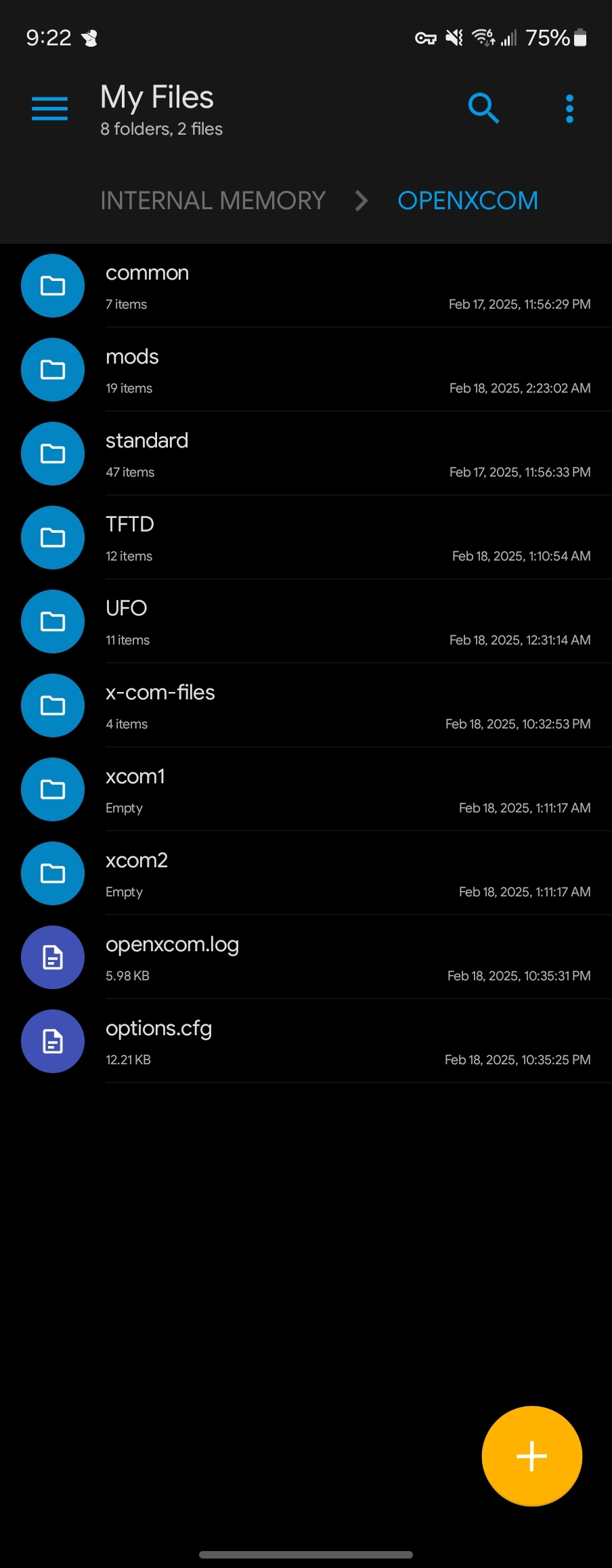I use both of these systems daily. They have some issues but are just fine for me. Honestly, they are just opposite extremes and I repeat that. They each chose a side.
Whereas windows makes me scream. It’s absolute horseshit that pretends to claim some middle ground that makes no one happy.
The post refers SSHFS which is based upon FUSE, a very neat technology in the Linux kernel which allows a non-kernel develloper - says a python developer-to turn anything into a hierarchy of files and folders, that you can access and modify with your regular local applications. When I says anything, I’m dead serious, FUSE may turn the whole internet into a fake browsable tree of local files on your system. On windows, you have to write a fake disk driver to mimic a fraction of the feature. I don’t know ios but I guess Apple wouldn’t never allow such a wizardry by design.
Only tangentially related, since I don’t think NBD uses FUSE, but may I present Harder Drive
yeah!!!
There is a mac os port of fuse that works fine on intel macs, but requires a mighty amount of twiddling on apple silicon macs
I think you mean “sudo pacman” not “apt”, wow. fake linux (gendered diminutive).
Personally I would put
doas xbps-installbut I like to make my memes relatable to the wider linux community ;)It’s “sudo yum”.
whatever, arch noob; I run qubes.
yum is fedora, pacman is arch.
We call it dnf now. *Tips Fedora and leave
I hate that I know this; I don’t run either one.
yum’s old and busted; dnf’s the new hotness
Imagine using pacman instead of emerge
Imagine using emerge instead of cmake
Wait, is linux gendered or pacman?
no, no. saying the meme was made by a fake linux boy/fake linux girl/fake linux kid, because they forgot to say sudo and used the package manager from probably debian (apt), rather than the one arch uses (pacman).
I was being a tedious linux elitist asshole as a bit.
Ah, you’re all good. I feel rightfully shamed by my past self from giving up slackware in the early 2000s to go almost exclusively Ubuntu specifically for the package manager. I used to would have felt my adult self was a fake linux kid as well.
well, crucially; it was a bit. the actual that-person is an insufferable piece of shit. but like not in the same ways as im an insufferable piece of shit.
My past self was also and insufferable piece of shit in a completely different way that my current self is. I don’t believe it is our use of linux that drives this particular personality trait as much as the underlying humanity that we share.
yes, truly: linux use is inextricably tied to humanity, and the beauty/horror of the human condition.
the great literary conflicts: man(in the old english sense that needed a prefix to gender it) against nature, man against man, man against ‘god’, and choice of linux distro.
I feel that what I wrote and what you interpreted are very different things, that having been said I sincerely wish I had written what you’ve responded to.
Yeah this post is bull shit!
I just spent the last 2-3 hours building SSHFS from source for Proxmox & Debian, it really sucked!
Ps: Fuck gLib2.0
Sounds like self inflicted pain. If you absolutely needed the latest why are you simultaneously running debian again?
Sounds like self inflicted pain.
It most certainly is unfortunately. gLib2.0 is apart of the Debian main repository but for some damn reason I couldn’t pull it with apt.
Resulted in building it with meson but had so much trouble.
Ya you are holding it wrong. If it wants a different basic library version than you have available to you then the solution is never ever to somehow go and get the library this will never ever ever work and will only succeed in breaking your entire system as all the other stuff now doesn’t work with the new library.
Wait what, why? I’m out of the loop. What’s up with Proxmox and glib 2.0?
Yay!!
Wouldn’t you just use AFS, CEPH, NFS, or 9p?
I really don’t want to be that guy, but isn’t SSHFS (FUSE) actually a terrible option when compared to an actual file-system? MacOS isn’t really missing out on much there.
The most painful part of MacOS (which makes it downright unbearable for me) is that system configuration files are XML. It’s an absolute nightmare.
SSHFS uses SFTP which is built into SSH, so no server to install. Its not as fast as NFS, but requires no setup. For something small like a home lab, that is a big advantage.
This. Surely not the fastest way to get content from/to a remote computer, but it just works as soon as you enable sshd.
SSHFS is very mature. I use it for administering several home servers.
It works so well that they added a mode where some users can have SFTP only access (without SSH shell) so you can set up shared directories. It was easier to set up (for me) than CIFS or NFS.
SSHFS is secure and works well over the internet. If you only want to access it over the LAN, then NFS is a much better option.
For some (most?) of us, we don’t have ssh access open to the world, so everything is over a VPN. So I can just use NFS over WireGuard which afaik is fairly secure, if you trust your endpoints, and works great over the Internet.
I’ve never had good luck with NFS on a high latency connection. SSHFS still works fine even if the server is on the other side of the planet.
NFS should work well enough on high latency connections - it was designed back when it was fairly uncommon to connect to a server over dial-up.
It’s definitely possible that SFTP is more optimized than NFS though.
I have this problem with Android. Google has turned the filesystem into unusable garbage, so you’re lucky, if you can launch a gallery app with a file path and it allows you to actually go through the images in that folder.
And of course, that’s with a local file path, so the situation is completely hopeless when your images are on a network share. Unless the gallery app itself implements the network protocol, you’re out of luck.
Wanna guess how often that happens? Yeah, it simply doesn’t. Even if it’s theoretically just a library, when you build it into the gallery app, that dev has to continually maintain and test it.SSHFS actually works perfectly on android, just needs root. Here’s the app I use.
It’s funny how the README calls it a “VERY bad solution”, but so far it’s the only remote filesystem tool I’ve seen on android that could be described as anything close to usable.
Hmmm interesting. I’ve never had issues with that. I just mount it once to a mountpoint in my shared storage and it just works. Probably a ROM-specific thing.
@renzev for me, /mnt/runtime/default is not enough, because some apps using /mnt/runtime/read or /mnt/runtime/write as storage.
I love how android uses ext internally, but doesn’t support ext drives natively.
I can’t even mount my Android storage to my computer without some unreliable MTP FUSE program.
Thats an interesting server. Also, did you mean garbage or garage?
Solid Explorer on Android is great, supports all kinds of protocol connections
I mean, thanks for the suggestion, but it doesn’t seem to be open-source, so that’s a hell no from me…
Fair enough, I’ve been using it for like 10 years 🤷♂️
You also didn’t specify anything about open source in the original comment lol
Ah, someone with experience with Solid Explorer. I’m hopeful you might be a power user.
Long ago, I looked into it, but was dissuaded because the details views therein seemed to waste vertical whitespace. An absurdly small font, close to the bottom of the icon to maximize empty vertical space, was used for details (at least datestamp, I think).
Is that still the case? Have they added a method to increase the font size of the details without also increasing (or perhaps simultaneously decreasing) the filename’s font’s size? I couldn’t find one when I tried it last.
If there’s an interview with the creators wherein they extol the virtues of vertical whitespace within an item, or if some reviewer has done that for them, I’d love a link or two to read about it, see what I’m missing.
I’m sure the functionality is great. It’s the presentation I didn’t like. But perhaps there are unintended consequences of a compact layout…
Haha depends on what you mean, this is the default view I believe just zoomed out (pinched, rather then swapping to the compact view, which gets rid of the timestamp)

Well, it was more of a rant, I wasn’t exactly asking for suggestions. But you making a suggestion was perfectly fine anyways. I do just have opinions on proprietary Android apps.
Also Windows: “Ask your network administrator for access.”
Me: “Well I’m my own network administrator so what questions do you want me to ask myself”?
Windows: “Enter network username and password.”
Me: There is no network username or password. Sod it, I’ll bung them on an external disk.That’s a security quirk. Microsoft reeeeeally doesn’t want you to do anonymous SMB anymore, and with every version of Windows, Microsoft has made is more complicated to get it working like that. It’s probably still possible, but easier just to make a quick local user account and assign it read/write permissions to the share. Samba on Linux can still do it without as much fuss, but I’ve long since just accepted the extra step.
What’s the risk if done on local network?
Bad enterprise admins running companies without auth, MS getting the blame.
I would say not much. If it’s your own personal LAN, and only your devices are on it, and you’re not hosting super sensitive data, then I wouldn’t personally be worried. Just depends on your risk acceptance.
Edit: But if you are hosting sensitive data on an untrusted network, then definitely require a user with a strong password. Also, SMB3 and higher supports encryption (both in Windows and Samba for Linux). Encryption isn’t enabled by default, though. So keep that in mind. Easy to setup on both Windows and Linux.
I just wish both these platforms would get some modern remote desktop support built in. Remoting into Mac/linux vs Windows desktops feels like dealing with tech from completely different time periods.
Thank god most of my Linux remote work is ssh on the cli.
You… want remote desktop on kernel level?
The protocol, yes.
Odd, I specifically find the concept of this disturbing.
Yeah, I know suggesting UI and user experience improvements spooks Linux diehards.
it may be the current political climate of the country I’m living it, but kernel level remote access makes me feel inherently less secure. Don’t get me wrong, I never intend to give up my dumb terminal as my only way to use my computer either.
Sure. It risks introducing vulnerabilities. It needs to be implemented very carefully. I think a built in version, with security in mind, is a lower risk than relying on users to implement their own solution, and risk them picking the wrong one or setting it up incorrectly.
Every user convenience introduces vulnerabilities. The users are the weakest link in every system. It’s a balancing act, and one I don’t think Linux has ever balanced well for usability. But server core has shown there’s no reason for the service to be on by default. There’s much more dangerous Linux features that are switched on by default configs, like root logins and password authentication, so let’s not pretend Linux has ever taken a hard line on this.
I wasn’t trying for any ‘gotcha’ moment or anything, my paranoia is just particularly high these days. I apologize if my open rambling about my personal distrusts has caused you undue stress.
This doesn’t work without a grapical session tho.
Yeah, I know. Same on Windows Server Core I believe, but the option is in there to enable it.
I admit I don’t know the technical details well enough. But I know the user experience difference is ridiculously bad trying to remote into Linux. My workflow now is mostly using my tablet and remoting. If Linux had better Remote Desktop protocol, it’d also be my go-to for a desktop experience. Right now, if I can’t use the terminal app for something, I’d rather just remote into a Windows box than feel like I’m using a computer from the 90’s with Linux Remote Desktop options.
In the old days we just used X over SSH (xforwarding) and only sent the single application over, no desktop need by running on the host (well technically client as X is backwords).
I know the user experience difference is ridiculously bad trying to remote into Linux.
It isn’t. There are lots of tools for this, including using RDP. It is really easy actually. It is a graphical front end tool on KDE.
The “bad” part is that the user must already be logged in and the desktop opened because that is how linux works.
Speaking of modern: I usually just use moonlight for streaming and sunshine for hosting between machines that are on the same network because it is so simple and available in Fdriod for Android devices. You can share apps or the desktop.
You CAN configure wake on lan and run a script to auto log in a user (with moonlight) if you wanted to use it with a machine that is off, but I can agree that that is a few extra steps.
I remember in college we had access to a Unix box via these computers that remoted into it. I don’t know the technical details, but I was able to log in with my account and it was presented as a GUI on my end. We used No Machine as the client if that’s relevant. I wonder how something like that can be set up.
I actually just tried moonlight/sunshine this past week for gaming, and I was disappointed. The interface is missing critical components that Steam link has. Makes it almost useless unless you have a keyboard attached in many cases.
But I hadn’t thought of using it for Remote Desktop into Linux. Sounds a lot better than No Machine. Thanks for the tip.
What is missing? I have had no issues with it.
But you can use Steamlink as a remote desktop tool too. I do it all the time with my steamdeck in desktop mode.
Those names. Moonlight is a gui for ghostscript for easy pdf-compression, too.
Windows Server Core still has a window manager, just all it does show a command prompt very similar to the one in the usual Windows recovery environment.
K. And what massive vulnerabilities have been introduced by that? I’ve seen no articles or sources backing that claim.
I never mentioned vulnerabilities, I just wanted to point out that, RDP doesn’t really work without a graphical session, Windows Server Core gets around this by being a graphical session (although very basic).
Also I’m not sure, but I don’t think Windows handles RDP on the kernel level, it’s just nicely tied in with DWM and doesn’t have to deal with the multitude of window managers on Linux.
Handling RDP on the kernel level does sound like a bad idea security wise, but there should be a better way.
I like using No Machine
That’s also my go-to on Linux, but it’s still clunky as hell compared to RDP.
XRDP is fine when you get it working, but yeah there’s a little bit of setup involved
I’ve gotten it working plenty of times. Still doesn’t hold a candle to RDP.
Isn’t MacOS based on a Unix kernel? Or did they evolve away from the core principle of treating everything as a file?
You’re correct. Also you can sync files across all devices, built in. The meme is a bit fart sniffy.
What’s the best way to do the file syncing?
Syncthing
Works flawlessly on every platform (even mobile ones)
Put things in the iCloud folder. You can optionally sync to any other device that is signed in to the same account.
I knew that one was bullshit or probably just simple ignorance. I use ssh and scripting to control my macs. Its easier than using ios depressing GUI tools.
Macos kernel is a mix of freebsd and mach. It’s half UNIX from BSD side.
It’s currently growing up like a teen wanting to be business major cause they resent their artist dad for being an artist or a math teacher instead of working in finance.
“Oh what does my dad do for living? He is like that redhat linux, in a way.”
Why nobody mentions samba?? That is the only thing I knew
Samba (and NFS) require you to set shares up on the server’s side. With sshfs, you don’t need anything but a ssh login to your server. Black magic
Because it’s unbelievably broken. Every time I try to set it up it’s always a huge pain, and in the end it’s extremely flakey at best. I’ve only ever seen the SMB protocol work as expected with its native windows implementation, third-party implementations like sambda are awful
Also samba can’t distinguish between /foo/ and /Foo/ which is a pretty small issue… except when it isn’t.
Or nfs
>2025
>Not using Plan 9 for distributed computingISHYGDDT
I use distributed storage for all my files using pirate bay
So you’re storing your shit at my house?
And I am thankful
fun fact: Windows uses 9p for bridging the Windows and Linux filesystems with WSL2. the devs had excellent taste in protocols.
Isn’t is fuse? Why then it doesn’t work on darwin?
Mac OS version of Fuse is a commercial software. That said there are other alternatives.
I use Samba over my LAN and ZeroTier to create a sort of VPN Samba on MacOS is a bit slow (heads up) I have not yet figured that issue out but this setup worked for me for a number of years. (and manages to handle my time machine backups over LAN)
Any more since most of my remote access needs fall under development I user Visual Studio Code and their Remote connections system (which is pretty fucking good and “only” requires an SSH connection… and a decent amount of RAM on the remote host)
There are a lot of things to beat up an MacOS over… but honestly getting more technical windows users to from Windows to Mac WILL help Linux adoption. Getting into the underpants of MacOS is very similar to linux (you just don’t HAVE to have fun unless you want to)
Wait what? The default kernel doesn’t have a fuse fs, inbuilt or as kext? Didn’t know that. I thought all modern un*ces come with fuse.
Edit: It seems apple is introducing something called LiveFS similar to (but incompatible) fuse. Couldn’t find much docs and I’m not gonna read xnu sources rn.
underpants of MacOS is very similar to linux
no it’s not. xnu is very different from linux, with even design philosophy far apart. The userland (and bsd interface aka positive syscall world) is similar to *bsd’s, not typical linux userland. Only real similarity is launchd because systemd drew inspiration from it.
The FuseFS thing; yeah It was crazy to me because I must abandon the metaphor by saying…
MacOS IS Unix AND Linux is really just trying its damndest to BE Unix
Both MacOS and Unix are POSIX… while Windows requires either WSL OR if you are old school cygwin to achieve POSIX compatibility
So to a degree they are the similar…
but like finding a dick on the internet you are always reminded by MacOS that Unix != Linux :) (I love Linux all the same)
I do not get what you’re trying to say here, sorry.
On the note on similarity I mean macos userland is closer to bsd than linux. Also for normal usage freebsd is much different in nature than usual linux (free)desktop though they share same desktop shells which isn’t the case for macos either. And while most people aren’t writing with posix api everyday, many (most?) paradigms translate to win32 so that the crt from mingw works well. It matters only if you’re working with msvc toolchain, and then you’ve to adapt to windows-isms.
Personal anecdote: yes I find macos more familiar than windows even though I use windows vm often and macos rarely. At least the command names are same/similar… So your point stands, my point is more on the Aktually side.
You pedantic fuck ❤️
<3
Lmfao
Doesn’t rclone allow for this? (Not sure how well it would with tough)
TIL.
Ah yes… secure shell for fuck’s sake















